Rhinoplasty in Pakistan
Search and Compare the Best Clinics and Doctors at the Lowest Prices for Rhinoplasty in Pakistan
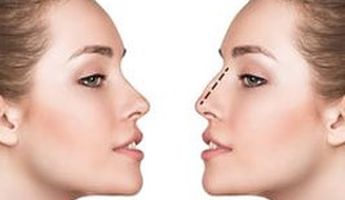
Find the best clinics for Rhinoplasty in Pakistan
No pricing info available
Poland offers the best prices Worldwide
Price: $ 101
From 78 verified reviews
Islamic Life, 22 September 2020
Allhudulliah finally i am happy for scars treatment . Dr Nauman Gill he is one of the best doctor .
- Home
- Pakistan
Compare Before & After Photos of _procedure_photos.phpRhinoplasty
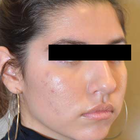

Half-side view


Front view

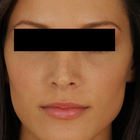
Front view
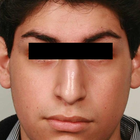
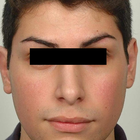
Front view
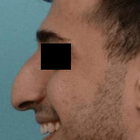

Full-side view
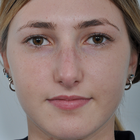
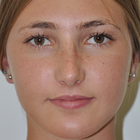
Front view

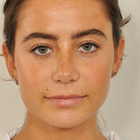
Front view

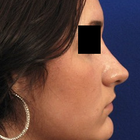
Full-side view
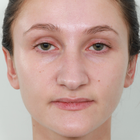
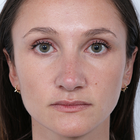
Front view
WHY US?
At Medijump, we're making medical easy. You can search, compare, discuss, and book your medical all in one place. We open the door to the best medical providers worldwide, saving you time and energy along the way, and it's all for FREE, no hidden fees, and no price markups guaranteed. So what are you waiting for?

Free

Best Price

Widest Selection

Risk-Free
What you need to know about Rhinoplasty in Pakistan
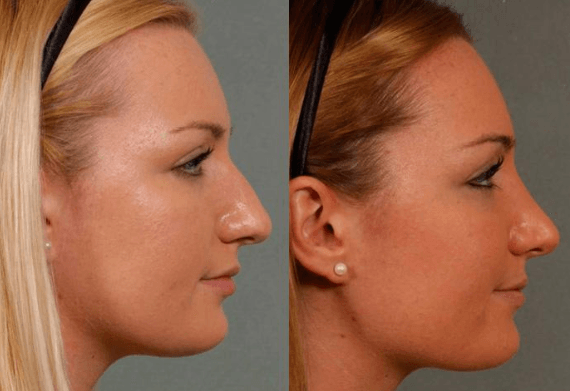
Rhinoplasty, commonly known as the “nose job,” is plastic surgery to change the shape of the nose and to improve its function. This procedure can be performed for medical and cosmetic reasons. Those with breathing problems caused by a birth defect, deviated septum, sinusitis, or an injury to the nose, as well as those who are not happy with the appearance of their nose, can undergo rhinoplasty.
Rhinoplasty has a number of benefits. However, the most compelling reason for patients to have this surgery is to improve the appearance of their noses, which can boost their self-esteem significantly. Besides altering the form and size of your nose, the procedure can also strengthen the bridge, narrow the nostrils, and reshape the tip.
While anyone can undergo rhinoplasty, teenagers are advised to wait until their nose has reached its adult size.
What does a Rhinoplasty Procedure Involve?
During rhinoplasty, you will be given local or general anesthesia to make sure that you are comfortable and you don't feel any pain. Your surgeon might perform the procedure inside your nose or through an incision at the base of your nose.
Changing the shape of your nasal bones or cartilage can be done in several ways, depending on how much needs to be added or removed, available materials, and your nose’s structure.
If your nose needs to be augmented because you want to increase its size, prosthetic implants or cartilage from your nasal septum or ear is used. Once your surgeon is done altering the shape of your nose and correcting any defect, they will place the nose’s skin and tissue back, then close the incisions with stitches.
How Long Should I Stay in Pakistan for a Rhinoplasty Procedure?
Depending on the complexity of the procedure and the type of anesthesia used, you may be able to leave the hospital on the same day or stay in the hospital for a day or two. The surgery itself takes around 1.5 to 3 hours to complete. Once you are discharged from the hospital, you should not leave Pakistan right away. Instead, plan to stay about 10 to 14 days for initial recovery and follow-up checkups. A week following the surgery, your surgeon will remove your stitches.
What's the Recovery Time for Rhinoplasty Procedures in Pakistan?
You generally need to wait at least 2 to 3 weeks until you can resume most of your normal activities. However, you should not perform any strenuous activities, such as intense exercise, for about 3 to 6 weeks. During the first few days after the surgery, you will experience some swelling around your eyes, but these will subside within 3 to 14 days. You will also have to wear a nasal splint for about a week following the surgery.
What sort of Aftercare is Required for Rhinoplasty Procedures in Pakistan?
Since you may experience some discomfort, your surgeon will give you painkillers to ease any pain and discomfort. Make sure to take the pain medication as prescribed. For a couple of weeks following the surgery, you should not blow your nose, as well as laughing or talking too much. You also need to avoid any clothes that need to be pulled over your head and glasses on your nose for a few weeks. Always make sure to cover your nose while going out in the sun during your recovery period.
It's important that you avoid bumping or hitting your nose, and keep your nose safe and protected from anything that could misalign the bones and undo the results. To help you recover smoothly and quickly, eat healthy and nutritious food.
What's the Success Rate of Rhinoplasty Procedures in Pakistan?
Rhinoplasty is considered one of the most complicated facial cosmetic surgeries. However, thanks to the advances in technology and surgeons’ extensive experience, the procedure has a very high success rate of between 85% and 90%.
Although rhinoplasty is generally safe, it does carry some potential risks of complications and side effects, including bleeding, infection, allergic reaction to the anesthesia, permanent numbness in your nose, difficulty breathing through the nose, an uneven-looking nose, discoloration, persisting pain, scarring, septal perforation, and a need for additional surgery.
Are there Alternatives to Rhinoplasty Procedures in Pakistan?
If you are unable to undergo rhinoplasty, you can opt for its minimally invasive or noninvasive alternatives, such as filler injections or Botox. Both filler injections and Botox are noninvasive and require only a very short visit with your doctor. It works by injecting the substance into your nose to change its shape. Many people choose these methods because it is not as painful as rhinoplasty, requires little to no downtime, and no incision or stitches are involved.
If you want to improve your breathing, you may be recommended to use nasal strips. The nasal strip is a type of bandage with adhesive-embedded splints or plastic ribs that is applied across the bridge of the nose and the sides of the nostrils. It can keep the airway open, making breathing easier.
Whilst the information presented here has been accurately sourced and verified by a medical professional for its accuracy, it is still advised to consult with your doctor before pursuing a medical treatment at one of the listed medical providers
No Time?
Tell us what you're looking for and we'll reachout to the top clinics all at once
Enquire Now

Popular Procedures in Pakistan
Prices Start From $404

Prices Start From $1,945

Prices Start From $192

Prices Start From $500

Recommended Medical Centers in Pakistan for Rhinoplasty

- Interpreter services
- Translation service
- Religious facilities
- Medical records transfer
- Medical travel insurance
- Health insurance coordination
- TV in the room
- Safe in the room
- Phone in the room
- Private rooms for patients available

- Interpreter services
- Translation service
- Religious facilities
- Medical records transfer
- Medical travel insurance
- Health insurance coordination
- TV in the room
- Safe in the room
- Phone in the room
- Private rooms for patients available

- Interpreter services
- Translation service
- Religious facilities
- Medical records transfer
- Medical travel insurance
- Health insurance coordination
- TV in the room
- Safe in the room
- Phone in the room
- Private rooms for patients available

- Interpreter services
- Translation service
- Religious facilities
- Medical records transfer
- Medical travel insurance
- Health insurance coordination
- TV in the room
- Safe in the room
- Phone in the room
- Private rooms for patients available

- Interpreter services
- Translation service
- Religious facilities
- Medical records transfer
- Medical travel insurance
- Health insurance coordination
- TV in the room
- Safe in the room
- Phone in the room
- Private rooms for patients available
Rhinoplasty in and around Pakistan
Introduction
The Islamic Republic of Pakistan is a country located in South Asia and it is the fifth-most populous country of the world, with a population exceeding 207.8 million. Although the country has plenty of natural and historical riches, this country is off the radar for most tourists due to political instability. Those who are curious enough to visit the country will find that it is filled with beautiful, from Mughals and mountains to the mighty Karakoram.
A large number of ultra-modern medical centers are available, and they are equipped and facilitated with the most advanced medical technologies. Numerous doctors and surgeons at these medical centers are normally foreign qualified. Large numbers of patients from neighboring countries and the Middle East have traveled to Pakistan to undergo various medical procedures, mainly for organ transplants or fertility treatments.
Popular Cities and Regions in Pakistan
The capital city of Pakistan is Islamabad. This city was built as a planned city to replace Karachi as the country’s capital. Islamabad is known for its safety, high standards of living, and plenty of green spaces. Here, tourists can admire the symmetry of the Pakistan Monument, check out the Daman-e-Koh viewpoint, visit the Lok Virsa Museum, and stroll around the Faisal Mosque. Karachi, the original capital of the country, is a sprawling metropolis. Most visitors usually come to check out the Quaid Mausoleum and the Tuba Mosque. Another popular city for tourism in Lahore, which is filled with beautiful architecture and interesting museums. The most popular attractions in this city are the Badshahi Mosque, the Lahore Fort, the Sheesh Mahal, and the Delhi Gate.
Transport in Pakistan
The busiest airport in Pakistan is the Jinnah International Airport, which is located in Karachi. It serves both domestic and international flights to and from several cities in Europe, Asia, and the Middle East. Taking domestic flights can be a great way to travel around. The rail network is also extensive and comfortable. Taxis and Uber are also available.
Visas in Pakistan
Citizens of 5 countries, including Maldives, Nepal, Samoa, Tonga, and Trinidad and Tobago, can visit Pakistan without a visa. Several countries, such as Austria and the UAE, may obtain a visa on arrival if they possess ETA. Citizens of 15 countries, including Armenia and India, are eligible to apply for an online visa.
Weather in Pakistan
Summer (March – October) is hot and dry in the northern regions. However, July and August can be rainy, making the weather hot and humid. The temperatures can range from 9°C to 38°C. Winter (November – April) can be really severe and most cities will get frost. Also, the northern part of the country experiences heavy rainfall during this season. The average temperature ranges from 3°C to 25°C.
Additional Info
- Local Currency: The official currency is the Pakistani rupee (PKR). 1 USD will get you approx. 154.4 PKR.
- Money & Payments: ATMs are readily available. Pakistan is a cash-based society, and credit cards are only accepted in a few establishments. Tipping is not expected.
- Local Language: The official language is Urdu and English. Punjabi, Pashto, Sindhi, Saraiki, and Balochi are also spoken by a number of people.
- Local Culture and Religion: Islam is practiced by more than 90% of the population. Hinduism, Christianity, Ahmadis, Sikhism, and other religions are also practiced. Always avoid wearing body-revealing clothes in public places.
- Public holidays: Some of the most celebrated holidays are Holi, Pakistan Day, Eid ul-Fitr, and Eid ul-Azha.
Popular Searches
- Plastic Surgery in Thailand
- Dental Implants in Thailand
- Hair Transplant in Thailand
- Breast Augmentation Thailand
- Gastric Sleeve in Thailand
- Gender Reassignment Surgery in Thailand
- Laser Hair Removal in Bangkok
- Botox in Bangkok
- Dermatology in Bangkok
- Breast Augmentation in Bangkok
- Coolsculpting in Bangkok
- Veneers in Turkey
- Hair Transplant in Turkey
- Rhinoplasty in Turkey
- Stem Cell Therapy in Mexico
- Rhinoplasty in Mexico
- Liposuction in Mexico
- Coolsculpting in Tijuana
- Rhinoplasty in Korea
- Scar Removal in Korea
- Gastric Sleeve in Turkey
- Bone Marrow Transplant in India
- Invisalign in Malaysia
- Plastic Surgery in the Dominican Republic
- Tummy Tuck in the Dominican Republic
- Plastic and Cosmetic Surgery in Poland
- Rhinoplasty in Poland
- Hair Implant in Poland
- Dental Implants in Poland
- IVF in Turkey
